What you need to know to increase the return you get from investments in search engine optimisation
Search engine optimisation (SEO) involves so many disparate activities it can be hard to figure out what to do first and what the most important facets of this vital practice are. This guide will tell you exactly how important each facet of SEO is, so you can allocate your resources to the areas that will provide the best return on your investment (ROI) and therefore craft an awesome SEO strategy. My aim here is to help you produce an engaging and effective online presence that generates the most revenue for the lowest cost and effort.
And in case you’re worried about dodgy SEO techniques, this guidance focuses on providing the best experience for your target audience rather than trying to game the system. Check out the text or tune in to the audio.
Topics covered
Maslow’s hierarchy of needs
If you’ve ever studied psychology, you’ve probably come across Maslow’s hierarchy of needs. (Even if you’ve never taken a psych class, there’s still a good chance you’ve come across the theory.) If you haven’t heard about it, it’s a theory about human motivation that Abraham Maslow published in 1943.
The theory states that there are five categories of needs that motivate human activities:
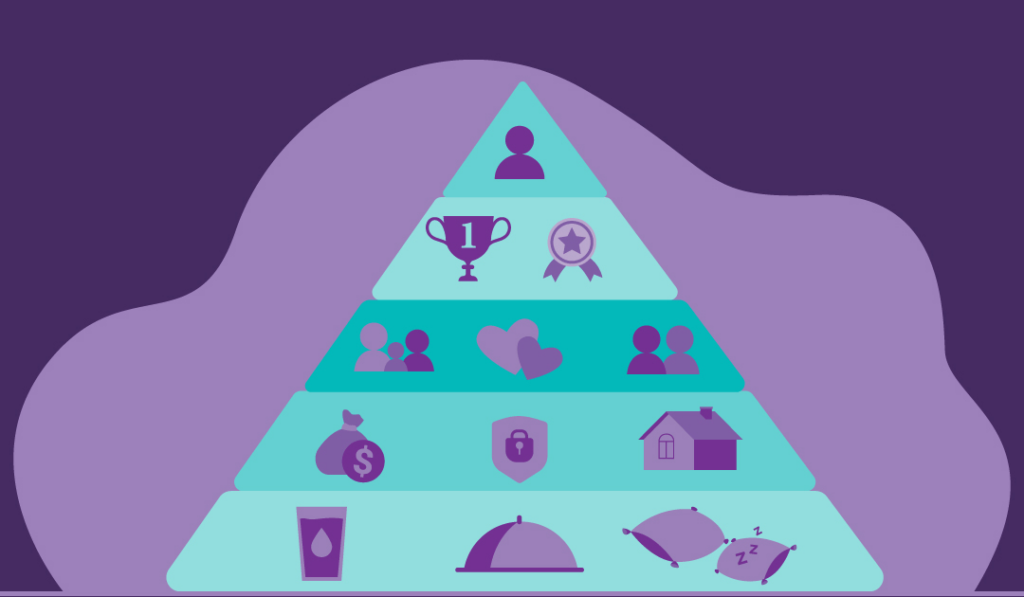
- Physiological needs — These are basic biological needs required for life
- Safety needs — These are fairly basic needs, like personal security and law, which people and societies need in order to function
- Social needs — These are needs related to relationships and connectedness
- Esteem needs — These needs are all about self-esteem, reputation, respect and the like
- Identity needs — These are growth needs related to self-actualisation — these relate to our need to be the best we can be
According to the theory, we all strive to fulfil the needs in each category, starting with the most basic physiological needs, and when we’ve satisfied enough of them, we itch to fulfil needs in the higher categories. Basically, we all need to build a strong personal foundation before we can build a whole pyramid.
And it makes sense. After all, there’s no point trying to build a reputation as the world’s best neurosurgeon if you’re going to die of dehydration in 12 hours.
Mozlow’s Hierarchy of SEO Needs

Maslow’s hierarchy of needs has achieved such widespread fame that lots of other niches have appropriated it. For instance, Moz created a similar hierarchy — Mozlow’s hierarchy of SEO needs — to illustrate the importance of each facet of SEO.
I thought this was a fantastic idea, but they haven’t placed enough importance on user experience, which is a big mistake. After all, what’s the point of creating awesome content if your target audience can’t easily access it?
So I’ve created my own hierarchy of SEO needs that provides great guidance for those of us who want to please humans and the Google gods.
Wade’s Hierarchy of SEO Needs

When constructing my hierarchy of SEO needs, I carefully considered what we all need as internet users as well as known search engine ranking factors and the effort required to address each need. I then grouped the SEO needs into six categories and ordered them according to their importance:
- User experience — Items in this category are the minimum requirements for a website to survive
- Search engine accessibility — Items in this category are the minimum requirements for a website’s content to be found by search engines
- Engaging and persuasive marketing assets — These make up the meat of an online presence
- On-page search engine optimisation — Items in this category help search engines understand marketing assets so they can rank them appropriately and display them in response to relevant search queries
- Promotion — Items in this category help online presences grow and thrive
- Schema markup — Items in this category are the decorations on the icing on the cake
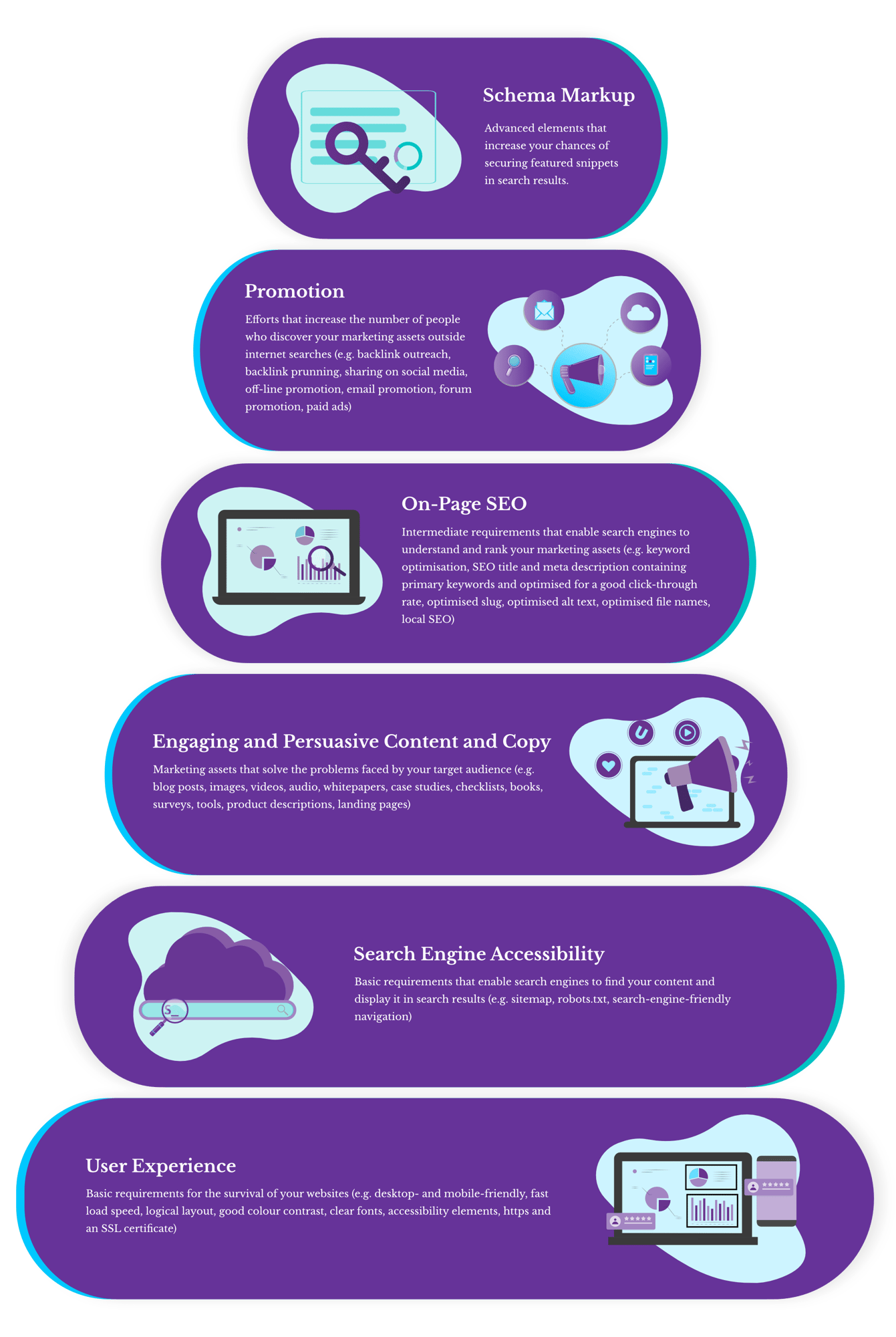
Note that the time when you perform the actions included in some of these categories may overlap. For instance, you’ll likely develop your site architecture and website navigation at the same time. Similarly, you’ll likely create content and do your on-page optimisation at the same time.
Also, note that I refer to ‘your website’ a lot throughout this guide. I’ve used this terminology for two reasons: 1) most people using this guide will have a website so it’s the most broadly relevant term and 2) it’s much easier than spelling out all the assets that can be subjected to an SEO treatment. However, most of the information in this guide applies to all parts of your online presence. For instance, blogs are essentially a website, so anything that works for a website will work for a dedicated blog too. It’s also entirely possible to optimise the content you post to social media platforms and other similar online platforms. The difference in those cases is that you may not be able to perform all of the technical optimisations. As an example, you can’t create your own SEO title for an article you post on LinkedIn, but you can include SEO keywords in other strategic locations within the article. So whenever you come across the word ‘website’, feel free to mentally substitute another term if it’s more relevant to your brand.
With all that in mind, let’s take a look at each SEO category in more detail.
User experience
When creating or updating your website, the very first thing you need to do is ensure it provides a great user experience. Unfortunately, as Moz demonstrated, this is often overlooked or underestimated when people are thinking about SEO.
And it’s easy to understand why. Whenever experts talk about ranking factors, they’ll tell you that user experience impacts on search rankings, but that it’s not one of the biggest factors. A perfect example of this can be found in this Google Webmaster Central Office-hours Hangout from February 2019 when one of the webmasters uses page speed as an example.

When talking about page speed as a asking factor and important part of providing a great user experience, the webmaster said:
“For example, let’s take Page Speed. …If it loads under a second and if there are like five different websites that load in different speeds under a second, then I wouldn’t say… the fastest loading website has a bigger advantage… Because all websites are loading pretty fast, so that then is not really a big ranking boost for that particular instance.”
Google Webmaster Central Office-hours Hangout, February 2019
So what the webmaster is saying is that if a set of competing pages all have similar speeds, improving page speeds by a few milliseconds isn’t going to make a huge difference. But what the webmaster is not saying is that page speeds don’t have much of an impact on ranking.
Because the thing is, if you’re comparing competing pages when one page loads in less than a second but all the others take over five seconds to load, then page speed is going to have a huge impact on search rankings — the page that’s quick to load is going to rank significantly better than those that load slowly (all other things being equal). A big part of that will be due to searchers bouncing away from the slow pages because they can’t be bothered to wait.
So you see, tweaking user experience may have only a slight impact on search rankings, but overall user experience has a huge impact on search rankings.
Let me give you another example. If you’re looking for the answer to a question and you open a search result to a page that’s really hard to read, will you stick with it and read the whole page? If you then do another search and see a search result from the same website, will you click on that result knowing that it will be hard to read?
If you’re like the majority of internet users, a web page that’s really hard to read would send you back to the search results and see you avoiding results from that website in future. When that happens, search engines take note and reduce the rankings of the hard-to-read pages.
As I said before, there’s no point publishing really awesome content if no one is willing to consume it. So, for this reason, providing a good user experience is your first task.
How to provide a good user experience

There are lots of things that go into building a good user experience. For example, people want content that’s visually appealing and websites that are easy to navigate. Few people are willing to wait around for a slow website to load, and most of us want to know we’re shopping on a secure website when we’re buying online.
The things you could do for your audience to ensure they have the very best experience when they’re on your website will be unique to that specific target market. Having said that, there are several things everyone needs to consider when building a good online user experience.
- Site architecture —Site architecture is all about creating a site that’s easy to navigate. Think about what pages should be in your menu and how you can label them so they make sense to your target audience. You should also think about how your pages link together, so it’s easy for visitors to move between pages to gather the information they’re looking for. While you’re at it, make sure you don’t have any broken links and ensure you’ve got the right kind of redirects in place, for example, use 301 redirects for permanent changes and 302 redirects for temporary changes. If you get these bits wrong, you’ll frustrate your users and your search rankings will take a dive.
- Visual design —Good visual design is all about providing an engaging visual experience that allows visitors to easily consume your content. Look for fonts that are easy to read and choose colour schemes that provide plenty of contrast, especially between text and the background. Make sure the text size is big enough to read comfortably and ensure there’s a good amount of space between elements on each page.
- Page speed —Every page on your site needs to load quickly, otherwise visitors will go elsewhere. Aim for a score of 90-100 using Google’s Page Speed Insights tool. If you can’t get it that high, 70+ could be fine depending on what your competitors’ scores are.
- Security — Your website visitors need to know you’ll keep their information safe and that they’re not going to be hacked, have their identity stolen, or end up with a malware-infected device as a result of visiting your website. You might take many steps to ensure the security of your website. For instance, you, and anyone else who has access to the backend of your website, should use a secure, hard-to-guess and hard-to-hack password. You might also use software to scan your site for malware. However, your website visitors can’t see that you’ve done those things. What they can see is whether you’ve set up an SSL certificate for your site. An SSL certificate encrypts the connection between a browser and web server. This basically means you can protect your visitors if they share personal data with your website, like their email address, if they’re signing up for your email newsletter, or their credit card details, if they’re buying something from you. An SSL certificate also verifies the identity of your site, so your visitors know they’re not visiting a site that’s impersonating yours for nefarious reasons. A site secured by SSL technology will display ‘https’ at the beginning of all its URLs (rather than ‘http’). Browsers will also generally display a lock or other symbol to indicate when a website is secured by SSL technology. If your certificate lapses, browsers will notify your visitors before allowing them to visit your site. If your website isn’t protected by SSL technology or you allow your certificate to lapse, your audience will likely avoid your site, and Google and other search engines will prioritise secure sites over yours.
- Accessibility —Accessibility is all about allowing people to access your site in the way that works for them. It starts with providing broad access and standard fallbacks. For example, every website should look great and work well on desktop, tablet and mobile devices. This is important for your visitors, and Google and other search engines will penalise you further if your website doesn’t work well on mobile devices. Similarly, you should write alt text for all your visuals — in part because the alt text describes the images if they don’t load for some reason, but also because screen readers rely on alt text to describe images. Standard accessibility practices also state that downloadable files should be available in at least two formats. Beyond that, if your target audience requires additional accessibility adjustments, make them a priority. For instance, I’m in the process of converting my content into an audio format for those with visual impairments and those who prefer to learn by listening rather than reading.
Search engine accessibility
Many SEO experts will tell you that setting up your website so it can be crawled by search engines is the most important and most basic form of search engine optimisation you can do. But you’re not going to get anywhere if you allow search engines to crawl your site when humans can’t use it. So, only once your website provides a decent user experience, do you need to look at getting it set up so it’s accessible to search engines.
Thankfully, this part of SEO is pretty straightforward.

How search engines operate

Search engines do three main things:
- Crawl —They scour the internet looking for content. When a search engine’s bot finds content, it follows any links to additional content as a method of locating new content and discovering recent updates. When a search engine explores a website in this way, it’s called ‘crawling’.
- Index —Once a search engine has crawled a website, it will organise and store a record of the content it finds within its index so it has a catalogue of content to display when someone does an internet search.
- Rank —Once the search engine has updated its index, it then ranks the entries based on how useful they are in answering someone’s search query.
How to make your website accessible to search engines

Because of the way search engines work, your job is to enable them to crawl your website and to tell them which content they should or shouldn’t index.
You can tell search engines which pages they should not index by submitting a robots.txt file. This can be useful for old pages, pages with special promotional codes, and staging and testing pages etc.
Allowing search engines to crawl your website is slightly more complicated.
The best way to help a search engine crawl your site is to maintain an accurate XML sitemap (a list of pages on your site) and a search-engine-friendly system of navigation (for instance, it’s safer to avoid JavaScript-enabled navigations).
As you add content to your website, you’ll need to update these. But it’s worth the effort to develop them when you develop the first iteration of your online presence. And if you’ve already got a website, it’s important you get these set up before you start producing additional assets, so you’ve got a good framework within which to develop a content strategy.
Engaging and persuasive marketing assets

Once you’ve ticked off the first two categories of SEO, you can start developing awesome content and copy. Now, you may wonder why I’ve given this its own category rather than combining it with the next category. And the short answer is that it’s entirely possible to achieve good search rankings by producing really awesome content and copy. Yes, you’ll have an easier time of it and you’ll get better results if you also do some on-page optimisation, but you can get decent results in the absence of this step.
The key here is to create marketing assets that provide real value for your target audience — you want to prove you can solve their problems so they keep coming to you for free and paid solutions to their problems. If your assets are really awesome, search engines will eventually recognise that your audience loves them and they’ll start prioritising them in their search results. It’ll just take longer and the search engines will have more trouble figuring out which search queries are relevant.
And remember, they’re called marketing assets for a reason. Your content and copy should always provide value to your business, otherwise it just wastes time, money and resources. So make sure you invest properly in every asset you publish.
Note that investment in this context doesn’t necessarily mean financial investment. You should invest appropriate time, energy, resources and/or money into developing the best content you can reasonably afford because these marketing assets are what drive sales and what you get out of them is related to what you put into them.
Your sales funnel
Most businesses will benefit from producing content for every stage of the sales funnel. Most business sales funnels consist of the following stages:
- Attract stage — when the focus is on finding and attracting prospects through either outbound marketing, inbound marketing or a mix of the two — and converting them into leads
- Nurture stage — when the focus is on nurturing leads and getting them ready to buy
- Convert stage — when the focus is on converting leads into paying customers
- Loyalty stage — when the focus is on inspiring customers to become loyal customers that keep coming back for more of the same product or service, or additional solutions for other problems
- Advocacy stage — when the focus is on encouraging loyal customers to tell everyone they know about how awesome the business and its solutions are

Your buyer’s journey
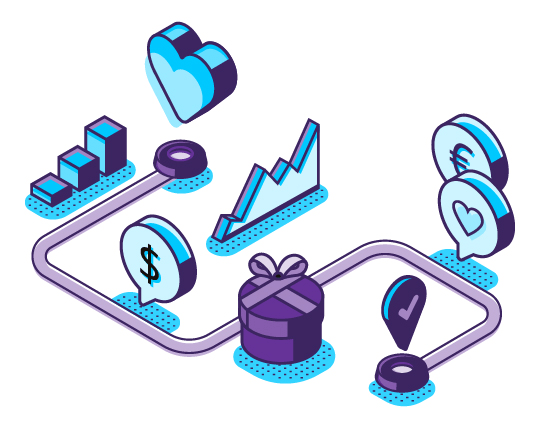
Similarly, most businesses will benefit from publishing content aimed at every stage of the buyer journey. These stages consist of the:
- Awareness stage — where the person is aware they are experiencing a problem (and you can also produce content for people who aren’t yet aware they have a problem)
- Interest stage — where the person is interested in finding a solution for their problem
- Consideration stage — where the person is actively considering the classes of solutions and the specific solutions that will best solve their problem
- Purchase stage — where the person buys their chosen solution
- Post-purchase stage — where the person figures out whether the solution is good quality and works for them etc.
- Re-purchase stage — where the person decides to buy more of their chosen solution (although once-in-a-lifetime solutions don’t have this stage)
Marketing assets for every stage of your buyer’s journey and sales funnel

Different types of marketing assets suit different stages of the sales funnel and buyer journey. For instance, product descriptions are for leads in the purchase stage of the buyer journey and the convert phase of the sales funnel. Blog posts, on the other hand, can be useful in every other situation. Here are some suggestions for types of content you could produce for each stage of the sales funnel.
The key is to produce a variety of engaging and persuasive pieces of content and copy such that you’re solving problems for your ideal customers no matter what stage of the buyer’s journey and phase of the sales funnel they’re in when they first become aware of your brand. You can do this by gaining a thorough understanding of your target market through detailed research.
Since blog posts are the most ubiquitous form of content used for these purposes, I’ve developed a set of guides that will help you get started with this form of content. I recommend you start with my overview of the seven types of blog posts that drive sales so you have an arsenal of effective blog post styles to choose from. If you want to skip the overview and become a pro at crafting each of the seven high-performance blog post styles, I’ve also produced a highly detailed guide that will teach you what you need to know.
Of course, you don’t have to produce all your content yourself. If content creation isn’t your thing, or you just don’t have time for it, understanding what makes good content will help you effectively outsource your content creation.
On-page search engine optimisation
Once you’re publishing content that really, truly solves the problems faced by your target audience, then you can focus on on-page search engine optimisation. This can be done as part of the content creation process, or content can be optimised after publication. It’s often easier and more efficient to do it during content creation, but only if that’s not at the expense of serving the target audience’s needs.
On-page SEO is all about helping search engines understand the value of a piece of content so they can rank it appropriately. On-page SEO primarily involves choosing strategic phrases that your target audience googles, and ensuring those SEO keywords, as well as synonyms of those keywords, are included in certain locations within the content.
The most relevant and important keyword, which we call the primary SEO keyword, should be in the SEO title and meta description and most of it should be in the content’s URL. For written content like web pages and blog posts, the primary SEO keyword should also be in the content’s level one heading, the first paragraph, the alt text and titles of at least one image if relevant, other areas of the text and potentially in one or more of the subheadings. For spoken content like podcasts and videos with speech, the primary keyword should be included early in the spoken words and throughout the speech as appropriate.
Secondary SEO keywords, which are the less important search queries, can be included in the meta description and anywhere in the body, alt text, image headings, speech and subheadings of the content. In many cases, secondary SEO keywords make good level two and lower-level subheadings.
It’s important to note that while I’m talking about including keywords in content, I don’t mean you should slavishly include keywords that don’t fit or aren’t helpful. On-page optimisation needs to focus on searcher intent rather than specifically on the keywords themselves. If that means you only include a single instance of the exact-match keyword in your piece of content, that’s fine!

If that sounds a bit confusing or abstract, this example should help. Let’s say your ideal visitor needs to know how to make pancakes. They’re probably going to do an internet search for something like ‘best pancake recipe’. In this instance, your audience wants a recipe and so you would produce a piece of content that contains what you believe is the recipe for making the best pancakes.
You might call it something like ‘My Nan’s recipe for the best pancakes — your guide to making fluffy pancakes every time’. And in the introduction, you might say something like ‘I’ve eaten these pancakes hundreds of times and made them myself over 50 times, and I firmly believe this is the absolute best pancake recipe ever created’. You’d then list the ingredients, directions and perhaps some tips and hints. You’d probably include some photos and maybe even a how-to video. But you probably wouldn’t use the phrase ‘best pancake recipe’ again anywhere in the body text, although you’d probably include it in the image alt text etc. If you did keep using it in the body of the recipe page, it’d sound clunky and would probably just annoy your reader.
Instead, you might write things like ‘it’s vital you sift the flour before you mix it with the other ingredients as this is what makes pancakes fluffy’ and ‘For the best flavour, I recommend a blend of buckwheat and wheat flours — 100% buckwheat pancakes have too strong a flavour and 100% wheat flour pancakes are too dense’. See how these bits of text provide context about the best pancake recipe without actually using that specific phrase? That’s how you target SEO keywords naturally and with searcher intent in mind. (If you happen to be a pancake expert, please forgive me if that’s not the best way to make awesome pancakes. I am far from a pancake expert and I can’t actually eat huge amounts of wheat so I totally made all that info up for illustrative purposes. But hopefully you get my drift!)
Another aspect of on-page SEO is optimising a piece of content’s SEO title and meta description in order to achieve the highest click-through rate. This isn’t often explicitly spoken about in SEO circles, but it’s an important part of boosting search traffic.
Why? Well, search engines adjust rankings based on how useful their users find specific pieces of content. If a high proportion of people viewing a search listing click on that listing and consume the content, that tells the search engine that its users find that content valuable.
The proportion of people clicking on a search listing, as compared with the number of impressions, is the click-through rate.
So how do you boost the click-through rate of your search listings? You make sure your SEO title and meta description are compelling, accurate, interesting, persuasive, mysterious etc. Knowing your target audience will help you determine what kind of SEO titles and meta descriptions will work best for your brand.
And it’s really important that your SEO titles and meta descriptions provide a good indication of what searchers will see when they click through to your content. Otherwise, if they visit your content and immediately see it’s not what they’re looking for, they’ll hit the back button and search engines will know your content isn’t relevant to the search query so your ranking will take a hit.
So, just to reiterate, on-page SEO isn’t just about strategically placing SEO keywords. It’s also about optimising your SEO particulars to improve your click-through rates and bounce-rates.
Promotion

Now, it’s all well and good to produce awesome SEO-friendly marketing assets. But you’ll only get so far with organic search traffic. If you really want to drive lots of traffic to your online presence and signal to search engines that your content is superb and deserving of even higher search rankings, you’ll benefit from strategically promoting your content.
Content promotion enables you to increase the number of people who find your marketing assets regardless of whether they’re actively searching for answers or information. And the more people who share, link to and view your content, the higher search engines will rank your content because they recognise ‘the people’s voice’ about what’s good and what’s rubbish.
Now, before I delve into this topic in more detail, it’s important to note that social signals like the number of likes aren’t actually an official Google ranking factor because Google can’t rely on having access to social metrics. They used to be used for that purpose, but they’re not anymore. At least not by Google. Bing still uses social signals as a ranking factor.
Regardless of that, social media activity does indirectly affect SEO results on all search engines, including Google. In particular, it amplifies ranking factors that Google uses.
Plus, social media platforms are also search engines in their own right, so promoting your content on social media also allows people searching social platforms to find your content.
So, with that out of the way, there are several ways you can promote your content and those efforts can boost your SEO in a variety of ways.
Promote your online presence by encouraging backlinks

One of the most important and highest impact promotional strategies is to encourage backlinks, where a backlink is a link to your content from another website. And I say encourage backlinks because obviously you have no direct control over what someone includes in the content they own so you can’t actually build backlinks directly.
So, how do you entice other websites to link to your content? Here are some approaches:
- Reach out to websites that are linking to competitor content that’s old, out of date or just not as good as yours and suggest they instead link to your content
- Find relevant broken links and suggest the website replace the broken links with links to your content
- Contact the people or brands you’ve referenced in your content and let them know you’ve linked to their content or quoted them and then they may link to your content in return
- Share your content on social media and tag the people you mention or quote in your piece and then they may link to your content — and even if they don’t, they may promote your content to their networks which at least gets you more exposure
- Find websites with similar target audiences and propose a reciprocal link swap that will provide value to both audiences (this needs to be done with caution — see below for more information on how to do this the right way)
The key with all of this is to reach out to websites that have a high domain authority, ideally at least 70, so you get good quality backlinks that send a positive ranking signal to search engines. And backlinks from older, more established domains are also a better ranking signal.
On the flip side of the coin, if you notice you’ve got backlinks from really dodgy websites with a really low domain authority, you can prune them out of your backlink profile. The first way to do this is to contact the webmasters responsible for creating the backlink and ask them to either remove the link or add rel="nofollow" to the link. If you don’t get a response from the relevant webmaster, you can disavow the problem backlinks.
Promote your online presence on social media
Another excellent way to promote your marketing assets is to share them across your social media profiles. If you can develop high-value social posts that generate lots of shares, you’ll have more backlinks and more brand awareness. I’ve created a dedicated guide to promoting blog posts on social media that will help you with this process, and while it’s aimed at people promoting their blog, the same guidance is relevant to promoting other marketing assets.

Promote your online presence in digital fora
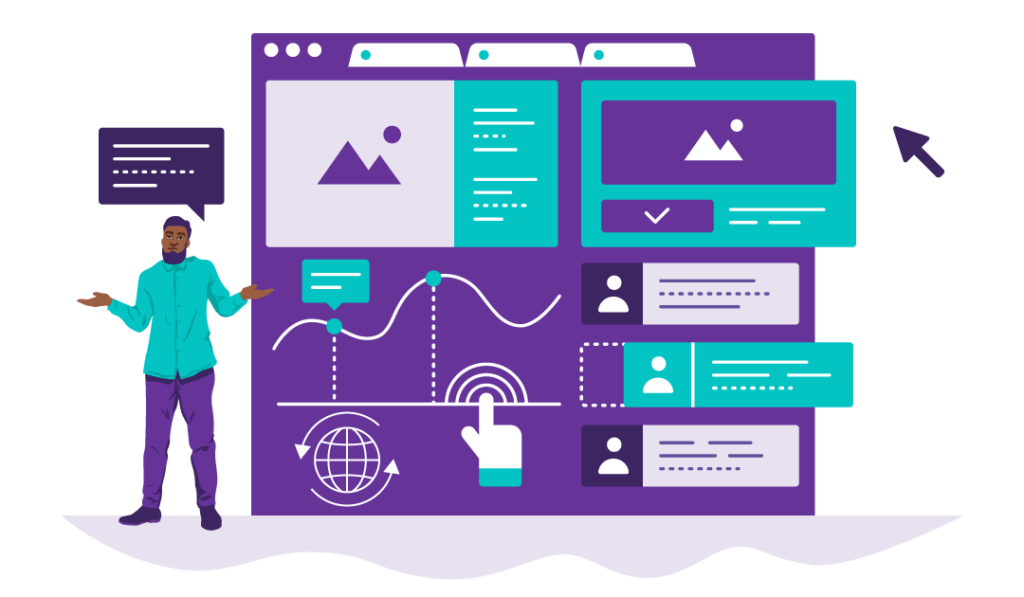
Another way to promote awareness of your brand and drive traffic to your content, and therefore send the right signals to search engines, is to regularly contribute to one or more online fora that are relevant to your industry. Once again, the key is to make sure you’re contributing something of value to the community.
Start by looking at the questions and discussions posted in the groups and get a feel for how the community operates. Once you’re comfortable in the community, you can start answering questions for which you have a lot of knowledge and experience to share. Ideally you can then link to a piece of content on your website that provides further information.
Some popular general fora you might consider using for this purpose include Quora and Reddit but there are lots out there and you’ll get even better results if you can find a niche forum that’s dedicated to your industry.
Promote your online presence in the offline world

One interesting content promotion strategy is to turn blog posts and web pages into brochures and flyers that you can hand out in your physical shop and at events etc. These can include links or QR codes that will send readers to your online marketing assets.
This kind of website traffic is one form of ‘direct traffic’ and it doesn’t directly affect search rankings, although it’s a great way to drive web traffic. Depending on your industry, it can, however, indirectly affect your rankings if people include those links in their own online content.
Here’s an example of how this could work. If you are a retailer and you create a blog post that contains a spin-the-wheel-type promotion that gives readers a discount or freebie, you could create a flyer that teases the information in the blog post and ends with a call-to-action to read the full post and get a discount. Some of the people entering your physical shop will visit that page to get their discount, which is great for your business, but it won’t help your SEO. However, if some of the people who receive your flyer are mummy bloggers (as an example), they might write a quick blog post or social media post that includes the link to your blog post, and those links will count as backlinks which can improve your search ranking.
Obviously this strategy won’t work for all brands, but I personally know two baby brands that have seen good results from this technique.
Another reason offline promotion can be useful for SEO is that it can increase the number of branded searches your target market performs, where a branded search is a search for your brand or business name. It also increases the number of searches people do for your brand along with relevant keywords.
When search engines see searches like these, it tells them that your brand is real and that people are interested in your views on particular subjects and this prompts them to boost your search rankings. This is another often overlooked SEO strategy and using offline promotion is an often overlooked way of enacting this kind of strategy. As such, it might just give you the competitive edge you need.
Schema markup
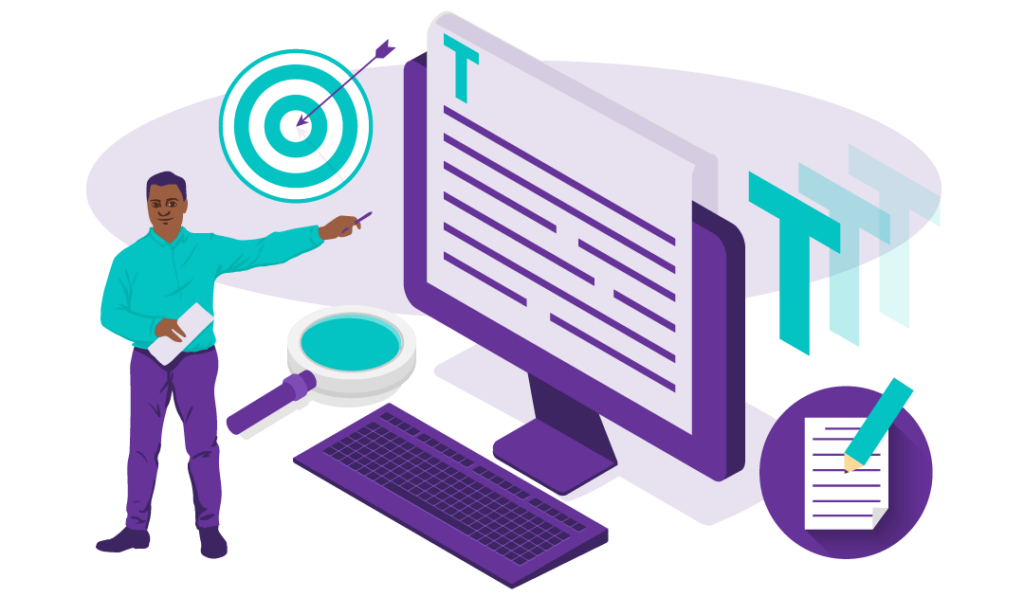
Schema markup is special code that you can put on your website to give search engines even more information about your content. Rather than just telling search engines what your content says, it also tells them what your content means. Search engines then use that information to display extra information in their rich snippets that can be really helpful to searchers.
You’re more likely to have your content included in featured snippets if you use schema markup and using schema markup increases search rankings by an average of four positions.
But more than that, improving your rich snippets gives your target audience more information about your content, which can also improve your click-through rates.
Schema markup is by no means crucial to ranking well in search results, but implementing it can give your SEO a nice boost and it’s a great next step if you’ve got all your other SEO efforts chugging along nicely.
If you want to add schema markup to your content, check out the basic guide on schema.org.
What’s next

This ranking of SEO techniques tells you what’s most important for your audience and for your search rankings. If you prioritise your SEO activities in the order I’ve indicated, you’ll know you’re putting your efforts and resources where they’ll do the most good for your business.
Once you’ve gone through this hierarchy of SEO needs, take some time to determine where you’re currently at. Which SEO tactics have you implemented from each category? Make a list so you can see it all laid out.
Once you’ve done this, you should be able to identify the gaps and then develop a plan for filling those gaps.
If you’re having trouble figuring out what you’ve done well and what could be improved, especially when it comes to technical SEO necessities, have someone do an SEO audit on your site. You’ll get a report that’ll tell you how you’re going in terms of site speed, optimised meta descriptions and SEO titles, broken links, backlinks and a few other really useful bits and pieces. You can then prioritise fixes and plan how and when you’ll remedy any issues you discover based on where they fit in the hierarchy of SEO needs.
